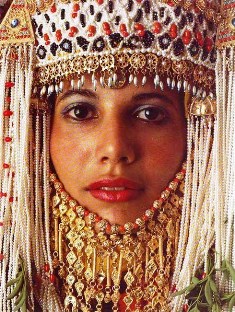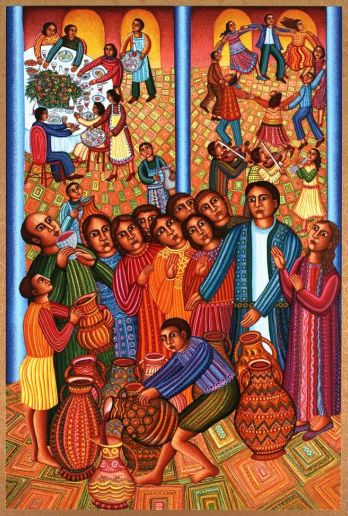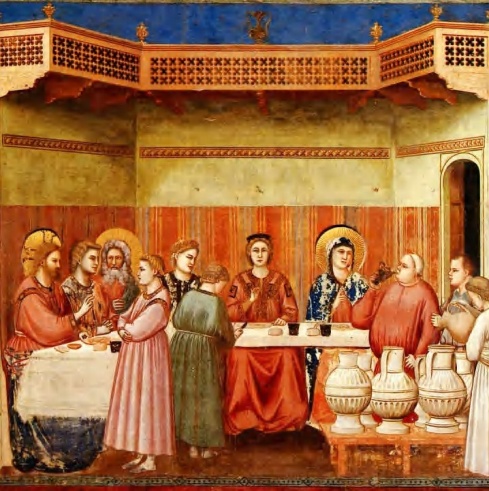
It’s frustrating, but there’s no actual description of a wedding in the Bible.

A wedding procession in the Middle East
The reader has to be a detective, looking at the clues and reconstructing the event.
Here are some extracts from the Bible that tell us what an ancient wedding was like:


A young woman’s jewelry was part of her dowry
Meanwhile, the bride was waiting, attended by a retinue of friends and female relatives – see the story of the Ten Wise and Ten Foolish Maidens in Matthew 25:1-13.
She was lavishly dressed in the best her family could afford, and wore jewelry on her head, arms, shoulders and feet: ‘the princess is decked in her chamber with gold-woven robes; in many-colored robes she is led to the king’ (Psalms 45:13) and ‘and as a bride adorns herself with her jewels… (Isaiah 61:10)
Her face was completely covered with a veil, which would stay in place all through the wedding festivities; it would only be removed when the young couple went to the bridal chamber: ‘how beautiful you are, my love, how very beautiful! Your eyes are doves behind your veil…’
It was this veil which allowed Laban to trick Jacob in the famous Genesis story.

What did Laban do? He put the plain, unloved Leah in a heavy veil, so that Jacob could not see that she was not beautiful Rachel, and so tricked Jacob into marrying the plain sister – see this story at BIBLE WOMEN: RACHEL
The bride wore heavy make-up. The woman described in the Song of Solomon has ‘lips like a crimson thread’ and ‘cheeks like halves of a pomegranate’ behind her veil. (Song of Solomon 4:3-4)
The bride was taken in procession to her new husband’s house: ‘in many colored robes she is led to the king; behind her the virgins, her companions, follow. With joy and gladness they are led along as they enter the palace of the king.’ (Psalms 45: 14-15). This sort of procession is still common in the Middle East today.
The bride was carried under a canopy painted with gold crescents; later the newly married pair would sit under this canopy during the festivities.

Jesus changes water into wine
at the wedding feast at Cana
There was a great feast, which could several days. In Matthew’s gospel (22:2) this takes place at the groom’s house. In other instances it happens at the house of the bride.
The honeymoon lasted for seven days: it was stipulated that Jacob must spend this period of time with his new, unloved wife Leah even though, at the end of the seven days, he would marry Rachel.
The bride was of course expected to be a virgin. After the wedding night her parents collected the bed linen stained with the blood from her broken hymen. This was proof that the girl had been a virgin when she married, and could be used as evidence in any disputes that might later arise.
A sour note: after the period of the Second Temple, weddings were held on a Wednesday so that an aggrieved husband, finding his bride was not a virgin, could go to court and lodge a complaint on Thursday, when the courts were still open.

Christian painters like Giotto show the wedding at Cana as a sedate event; in fact there must have been some respectable drinking going on